[Wanderlust Tips December 2019] There was not a moment of hesitation when I said yes to Adrian’s call, “Hey, do you want to go on a road trip?”. Soon enough, four of us got on the road. With Adrian as the main driver, the trip started from Southern Cross station in Melbourne, passed through the Great Ocean Road at Adelaide, then followed the Stuart highway to Alice Spring in the Northern Territory and came back. Apart from the route decided beforehand, we didn’t have any plan to stop for any specific tourist spot. The trip was a crazy moment of our youth – full of energy, enthusiasm, and even madness which led us to almost end up in the middle of the desert with a nearly-empty-fuel-tank car and a steaming hot pot on a cold early winter night.
[rpi]
TRAVELLING FAR
It was past midday on the second day of our trip and our white car was nearly out of fuel. Adrian hid his worried face behind his cool black sunglasses. Saying a swear-word, he regretted not filling the tank when we stopped at a McDonald’s toilet to clean ourselves this morning. Last night, with sleeping bags, we slept in our car and felt the harsh Australian winter with every breath we took. This morning, taking Augusta highway, we entered the great desert of South Australia.
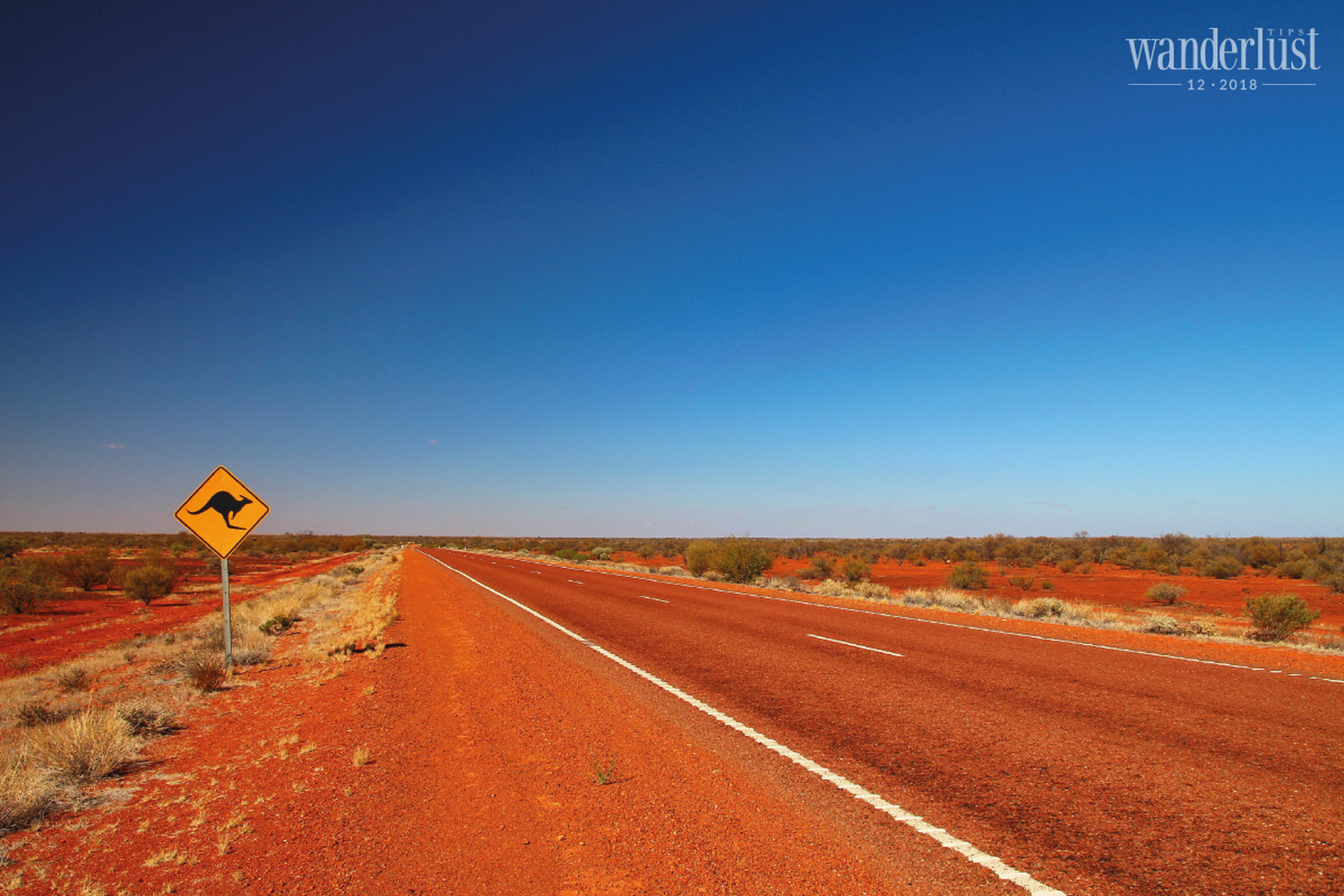
Entering the desert, everything outside of the windows quickly became strange. All those green and tall trees disappeared; instead, there were red and yellow dirt hills which ran far to the horizon. Even bushes became rare. Like other plants growing in the desert, those bushes were low, with spiky leaves covered in dirt and dust.
We drove over a bridge, under which was a dried-up river, and far away there was a puddle. Even in the rainy season, this desert is an arid zone.
The highway became less crowded with vehicles. There were times we did not see any cars for 45 minutes. However, if you looked close enough, there were some resting spots where caravans were parked. Some people only stopped for short breaks, some would stay there for weeks.
Suddenly, the trip became silent. Outside the windows, there was only red dirt, yellow sand, and a clear burning sky. Except for Adrian, we gradually fell asleep. When I woke up, the fuel indicator had already hit the Empty gauge. We were in the middle of nowhere, meaning no petrol stop. We knew that there would be a small town of opal miners along the highway, but were afraid of not getting there in time. I turned on the GPS map and found out that we needed to drive 80 kilometres further before we would reach the town. Everyone was worried that our car wouldn’t get that far.
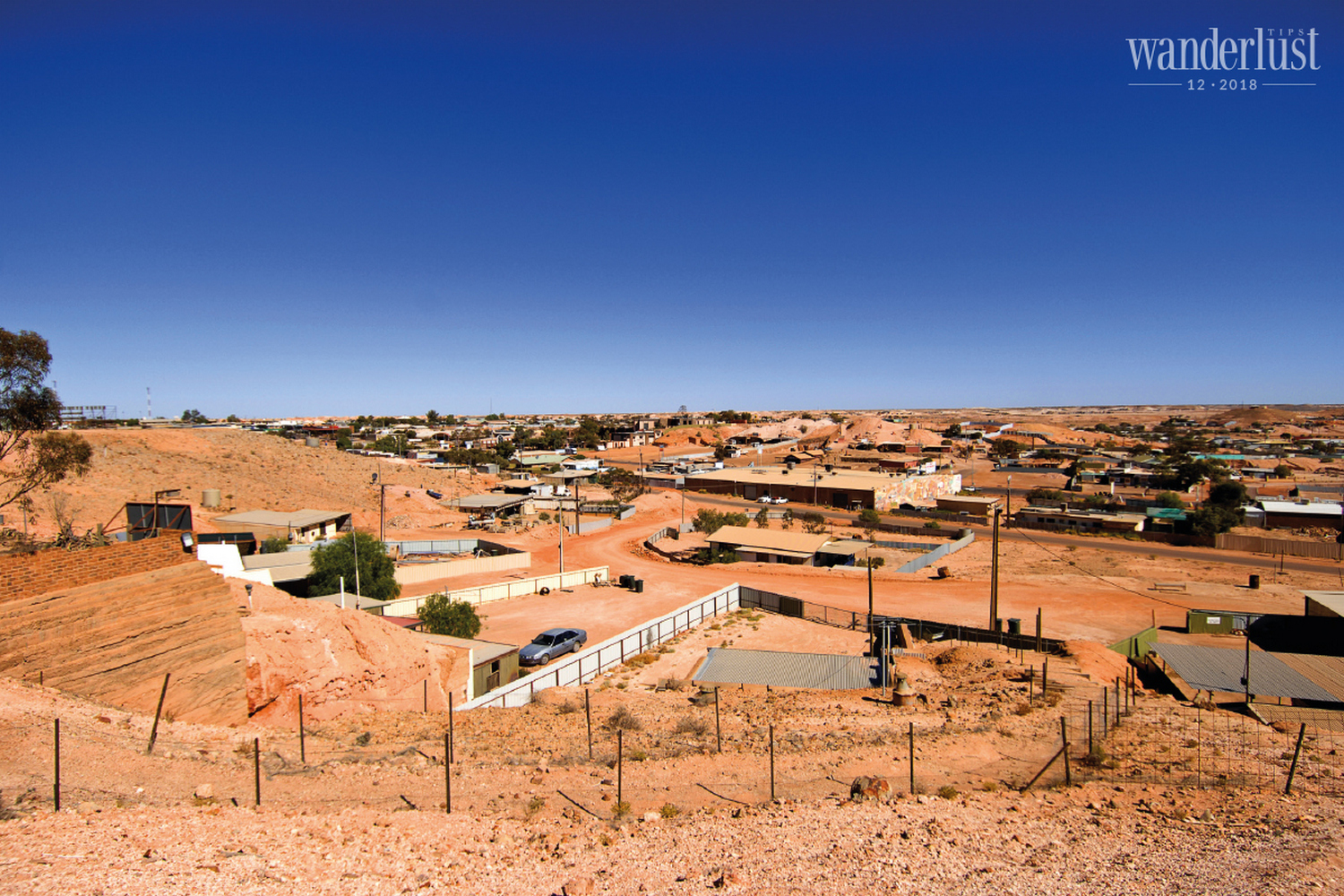
The red dot on the GPS map moved slowly. There was nothing new about the scene around us besides bushes and red dirt. There was no one around. The winter’s sun was shining harshly upon us; though unlike the flaming inferno summer, it was still too unpleasant to bear. We moved steadily on the deserted highway, hoping for a miracle.
Luckily, we arrived in Coober Pedy, the opal mining town, just in time. The fuel indicator had flashed red some time ago. We stopped at the biggest petrol station, filled the car’s tank, and went to the rest room. It had already been late afternoon, and the sun was setting down in the west while the cold desert winter’s wind started blowing. The town fell into its own silence despite its name “the opal mine of the world” – a used-to-be crowded touristic spot in the 80s when Stuart highway had just been completed.
We kept moving north for a little while, the sunset turned the horizon into a dramatically beautiful zone of red and purple colours. This reminded me of my favourite comic character: Lucky Luke, the lonesome cowboy. At the end of all episodes, he rode his white horse into the dramatic sunset of the west and sang his song:
I’m a poor lonesome cowboy. I am a long long way from home…
THE WARMTH ON A COLD DESERT NIGHT
We stopped at a resting spot to get rest and dinner. It was an area where caravans and small trucks came to rest. Scattered around were wooden tables under a roof for people like us to sit. Our white Toyota, covered in desert’s dust, looked so small when parked next to RVs and SUVs. Adrian had a quick nap inside the car as we needed him to stay awake that night to drive us all the way to Alice Spring after dinner. We planned to arrive there at midnight.
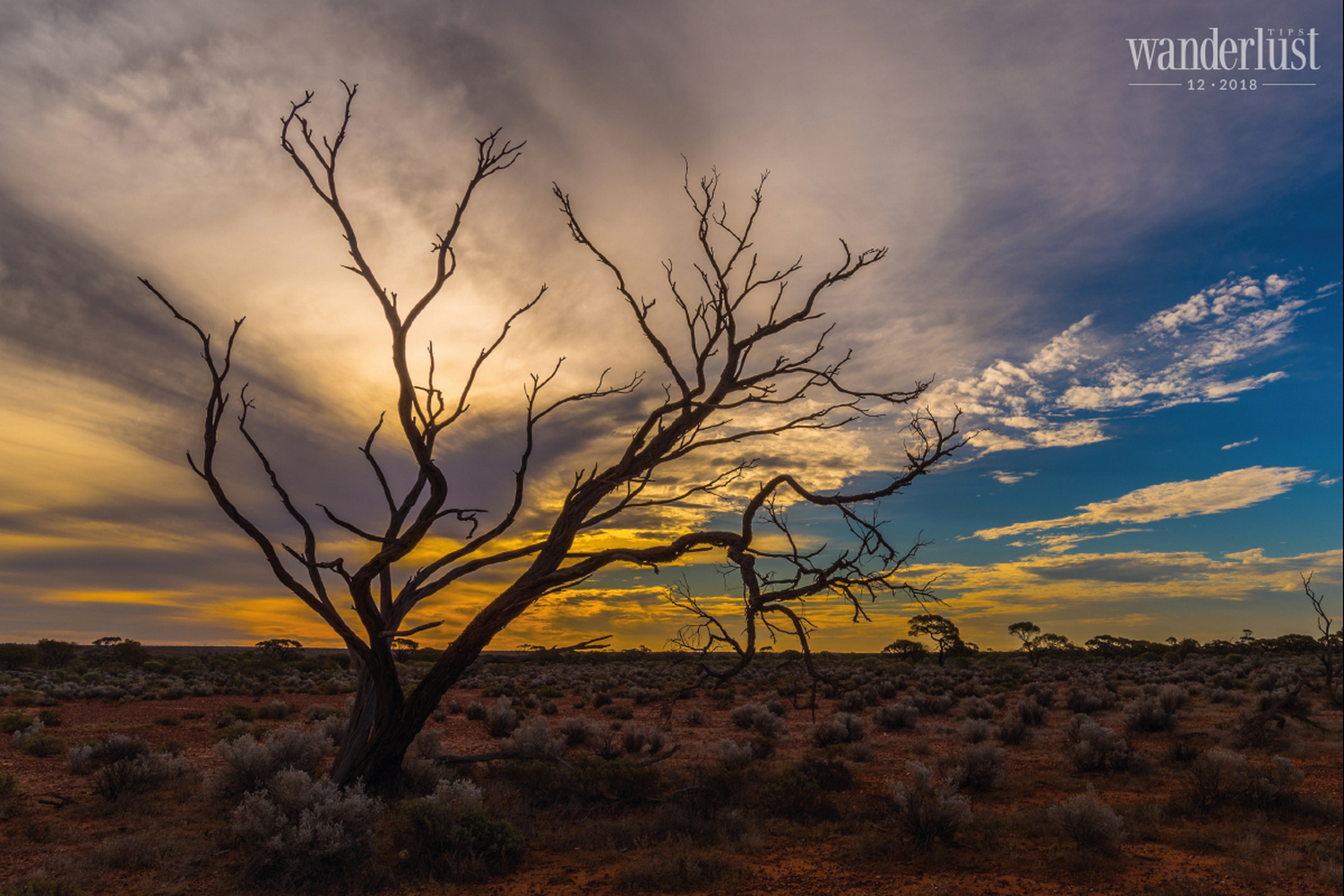
The sky turned into a dark purple colour with a hint of red. The clouds floating by the splendid sunset seemed to carry a loneliness along with it into the silent night of the desert. The great desert’s sun, which was nearly set with last rays turning weak, looked as beautiful as ever. Cold winter’s wind started to take over this land. For those who had never been to a desert before, it would be difficult to imagine the harshness of the weather here. Though the sun might shine brightly and warm all day, you could still catch a cold at night. The desert night was a different territory of cold wind and darkness, which slowly claimed all to its merciful void.
We turned on our torches. The white little light was not strong enough to fight the darkness of the land during a night like this. We did not have much time to complete this trip, so an ideal perfect camping trip with campfire and tents shown on TV or Instagram was not possible.
While Adrian was taking his nap inside the car, we started making dinner by turning on our mini gas cooker to boil some water. I brought some carrots and cabbage which I chopped into small pieces on a small chopping board. Kaz started cutting the Spam (canned cooked meat) into cubes and dropped them into the pot. Chilli powder was added too. The hot pot was ready. We put instant noodles in the bubbling and steaming pot. It was an interestingly delicious combination between the sweetness of carrot and cabbage with the saltiness of Spam and the spiciness of chilli powder.
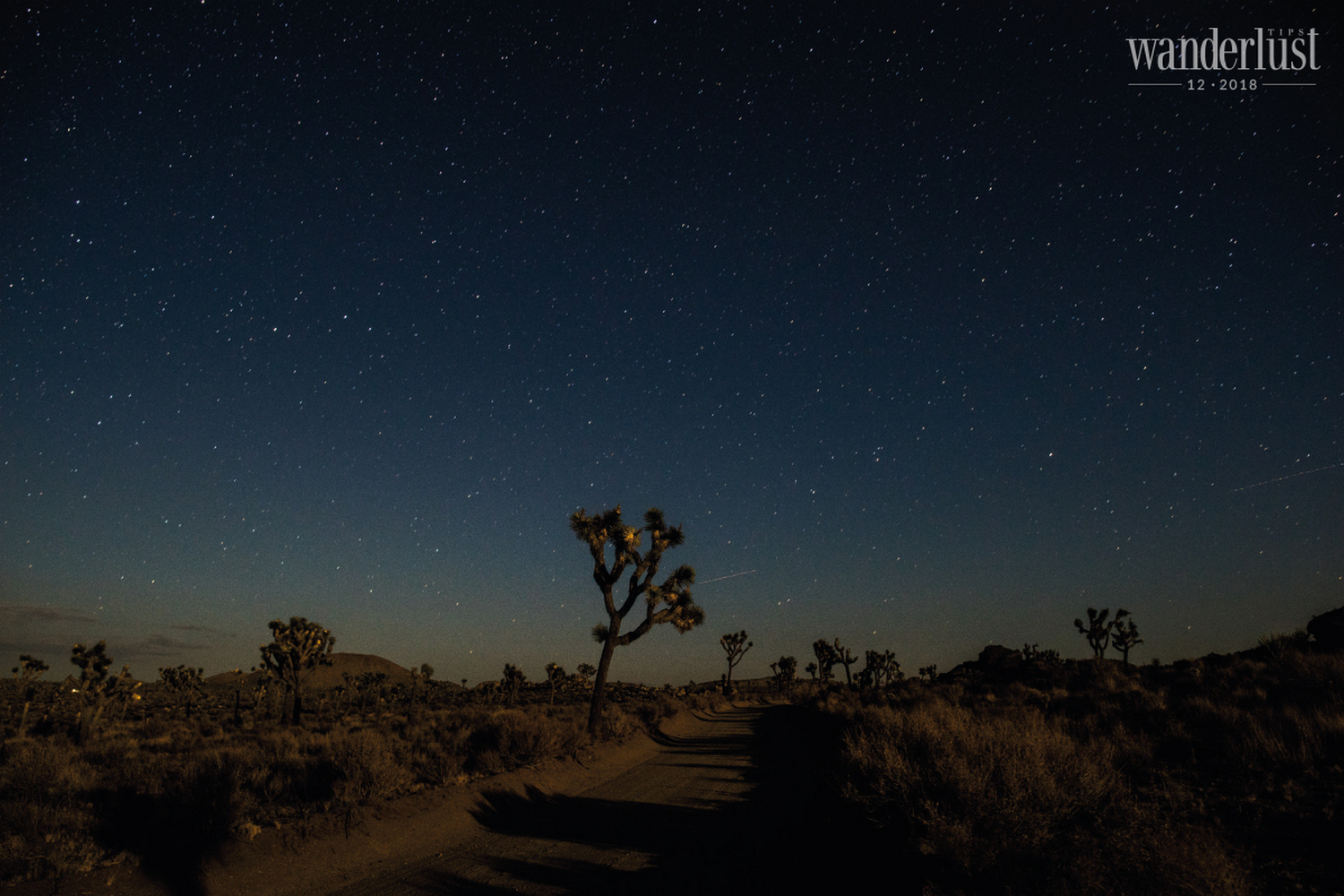
The night got colder and colder every minute. The temperature dropped to below 10 degrees Celsius and would go even lower later. The white steam rising from our hot pot was dancing in front of our torches’ light. We sat close together, fought for each strand of noodles and hot pot broth, and of course, any bit of warmth from the flame and the boiling pot. The howling wind tried to sneak through us, causing our blue flame to begin to recede at the moment of dark and light.
No matter if it was in our kitchen in the city or in the middle of this dark and fearful desert, the warmth of the stove was a miracle of life. It reminded me of some cold winter mornings when the stove’s flame was heating
a coffee pot in the kitchen. The steam escaped the boiling pot, making a pitching sound which broke the winter’s silence. And now, at that every moment in the desert’s night, the flame, again, danced a marvellous dance through the darkness and cold to boil our hot pot of simple yet such delicious ingredients. Perhaps, there wouldn’t be any better restaurant in this world that could provide us with these feelings while dining: the excitement of an unknown adventure, the fear of a night in the wilderness, and the desert’s cold loneliness. All these feelings combined and created some of the most unforgettable experiences in life.
AFTER ALL, WHAT REMAINED AFTER OUR TRIP?
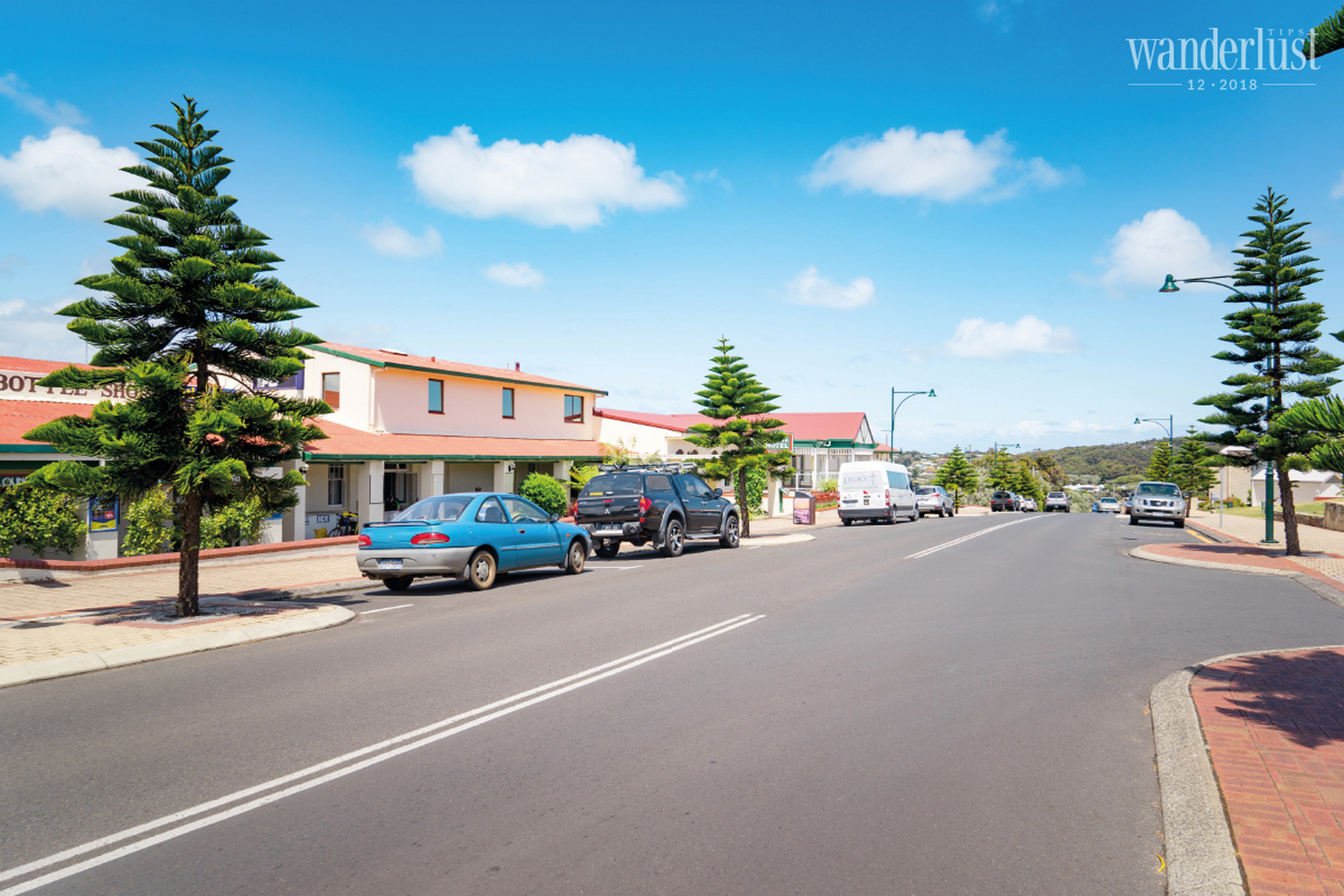
We resumed our journey after cleaning up. The white car looked like a bright strange spot crossing the desert’s night. Sometimes, there were some kangaroos jumping out of nowhere, crossing the highway, scaring us to death. Resting my head on the passenger window, I looked up and started watching all those shiny stars in the sky. When we lived in the city, it was difficult, even impossible to see those little twinkle stars sparking up there. Many stars from afar, millions of lightyears, may have disappeared. What we were seeing were only their lights that had been travelling alone for all eternity to reach our eyes at that very moment in history. I suddenly had a cold feeling running down my back. Was it the amazement? Or was it the fear of the wild beauty of this land? Or was it just the cold of this night? I wasn’t sure. I wondered if there were some eyes watching us among those twinkle stars up there.
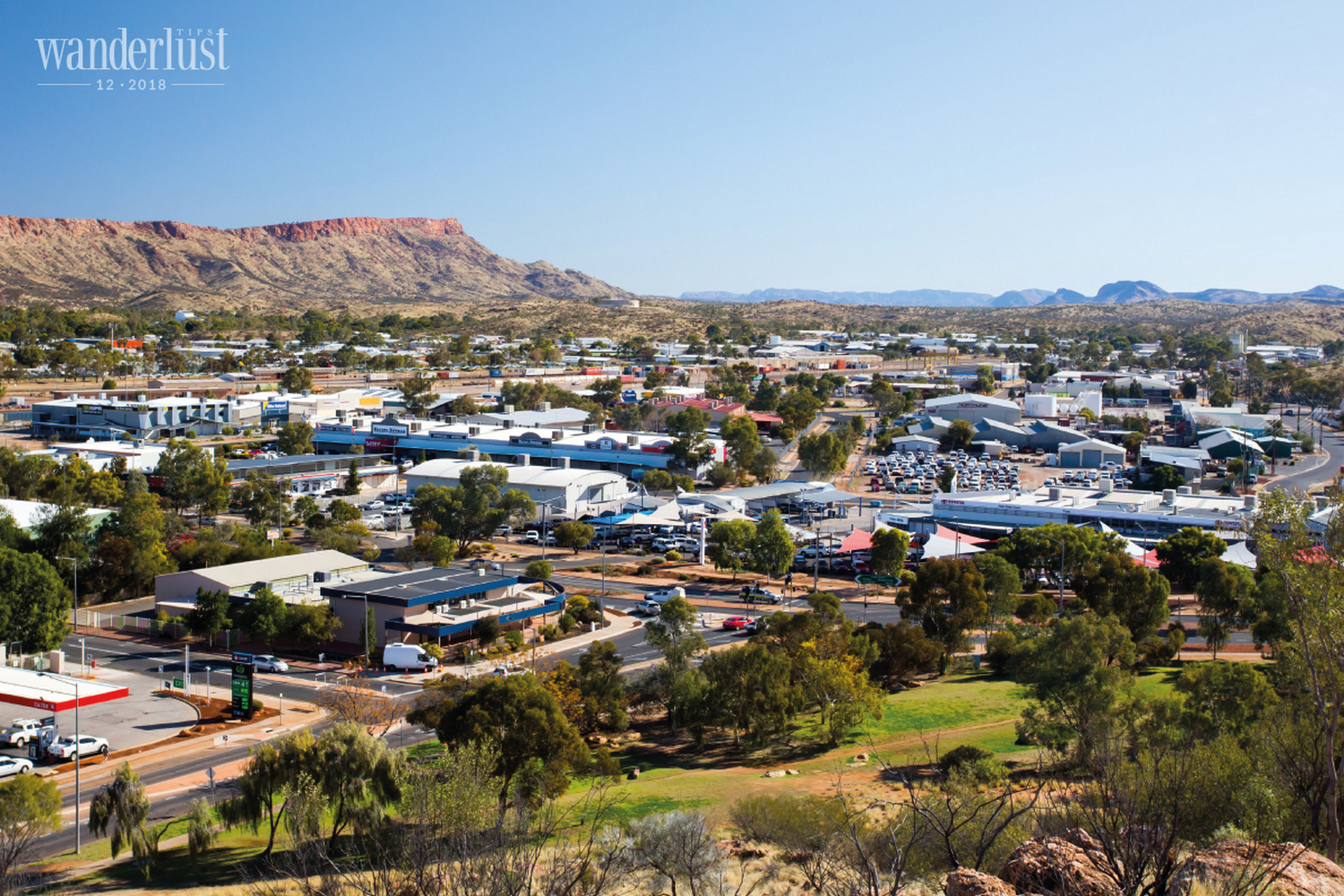
The journey continued, over 5,200 kilometres in 4 days and 3 nights sleeping in our car, fighting the cold winter of Australia. From Melbourne, we drove along the Great Ocean Road, watched all those giant rock formations out in the blue ocean, walked down Adelaide’s CBD at midnight, slept on the car next to the road, crossed the great desert of South Australia, slept in the car again, visited the legendary red rock Uluru, stayed awake all night to cross the desert back to Adelaide, took a nap in a motel, then finally got back to Melbourne when the sun started coming up on the fourth day.
After all, what I had left from this trip wasn’t any pictures but simple memories of a mad youthful time of my life, with an unexpected trip crossing the great desert without proper rest, which seemed too good to be turned down. And among all those memories of standing on the cliff looking towards the great ocean, standing at Uluru’s feet looking up the history it beared, or the loneliness of the cold desert’s night, there was the image of young kids gathered around a steaming hot pot with cheap ingredients to enjoy its deliciousness under the starry night.
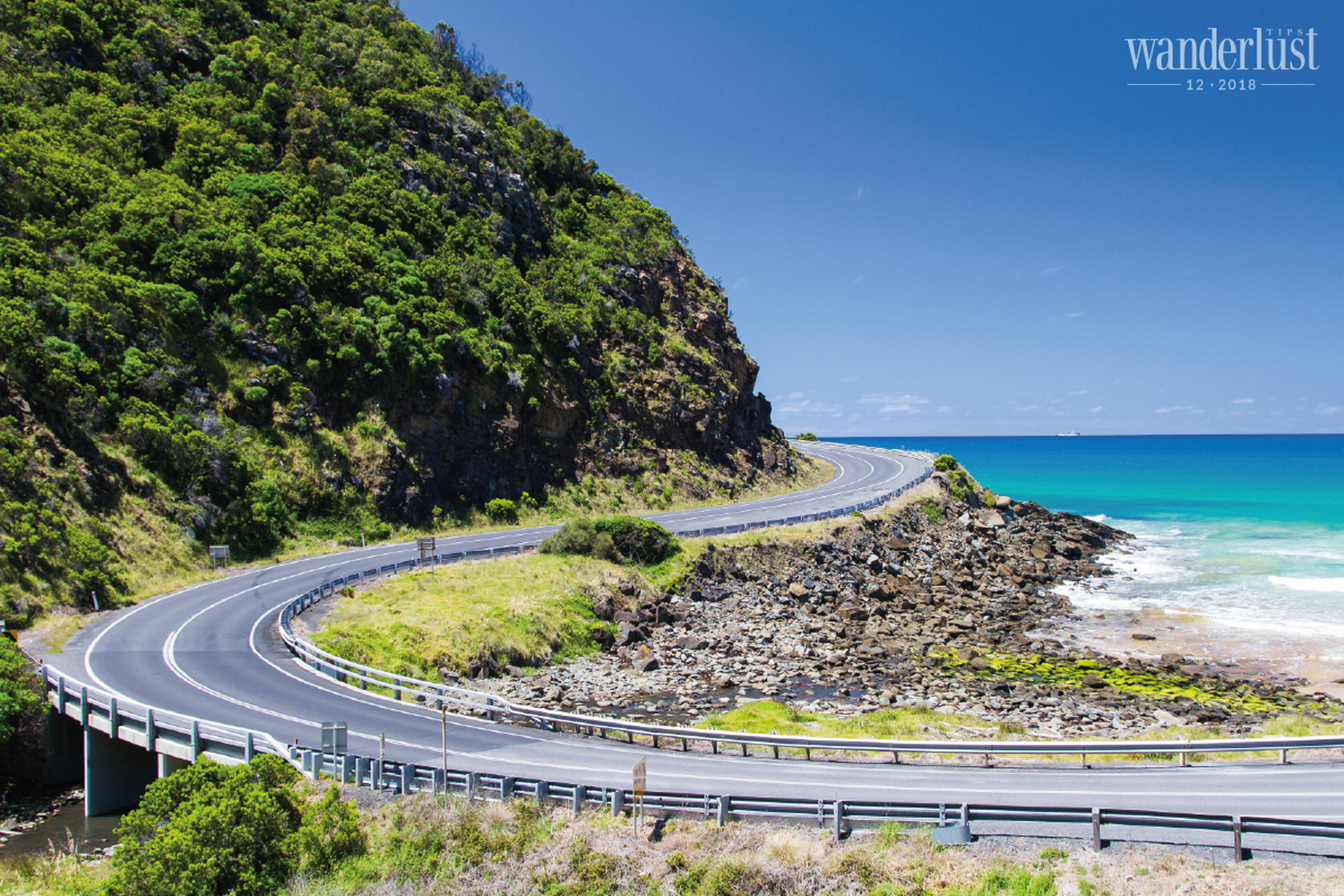
The Mexicans have a strong belief that true death only comes when all memories are lost.
What remains after our long journeys, some of which are as long as our life itself? Nothing but memories. We should keep those smiley faces and the warm memories of those times in our heart, because whenever we travel to an unfamiliar place, we will not ever get lost if we have those in our hearts.
W.TIPS
LANGUAGES
Australia uses English as the main language.
GEOGRAPHY
Australia claims the whole mainland of Oceania (other countries are islands). The centre of it is the vast desert. Most of Australia’s population live in coastal areas where many rivers from Northern tropical jungles meet the sea. On the other hand, the Southern area is more of the temperate zone with forests and snowy mountains. The capital of Australia is Canberra in the East coast, South of Sydney and North of Melbourne.
CLIMATE
Because of its broadness, Australia’s climate is diverse, varying from one region to another. While the North is of the tropical climate, the South is of the temperate zone. Snow is rarely seen in the urban areas in winter. However, many Southern snow mountains are famous tourist destinations, as the ski season starts from June every year. Located in the Southern Hemisphere, seasons in Australia are in reverse of what’s in the Northern one. The best time to visit the country is in spring (from September to November) and autumn (from March to May).
CURRENCY
Australian dollar. Other popular currencies can be exchanged easily at many exchange counters in the airports or in any city.
TRANSPORT
Australia has a fairly developed public transportation system, especially in big cities. Each city and state has their own system. Australians drive on the left side of the road.
NOTE WHEN CLEARING BORDER
Australian border force is very strict in all manners of speaking, especially when it comes to bringing food into the country. No fresh food is allowed. Forbidden, except for some dried seafood, fruits and products from land animals’ meat are strictly forbidden. You should discard any food left in your cabin luggage when arriving at international airports in Australia to avoid getting into trouble when entering the country.
Alex Tran | Wanderlust Tips

